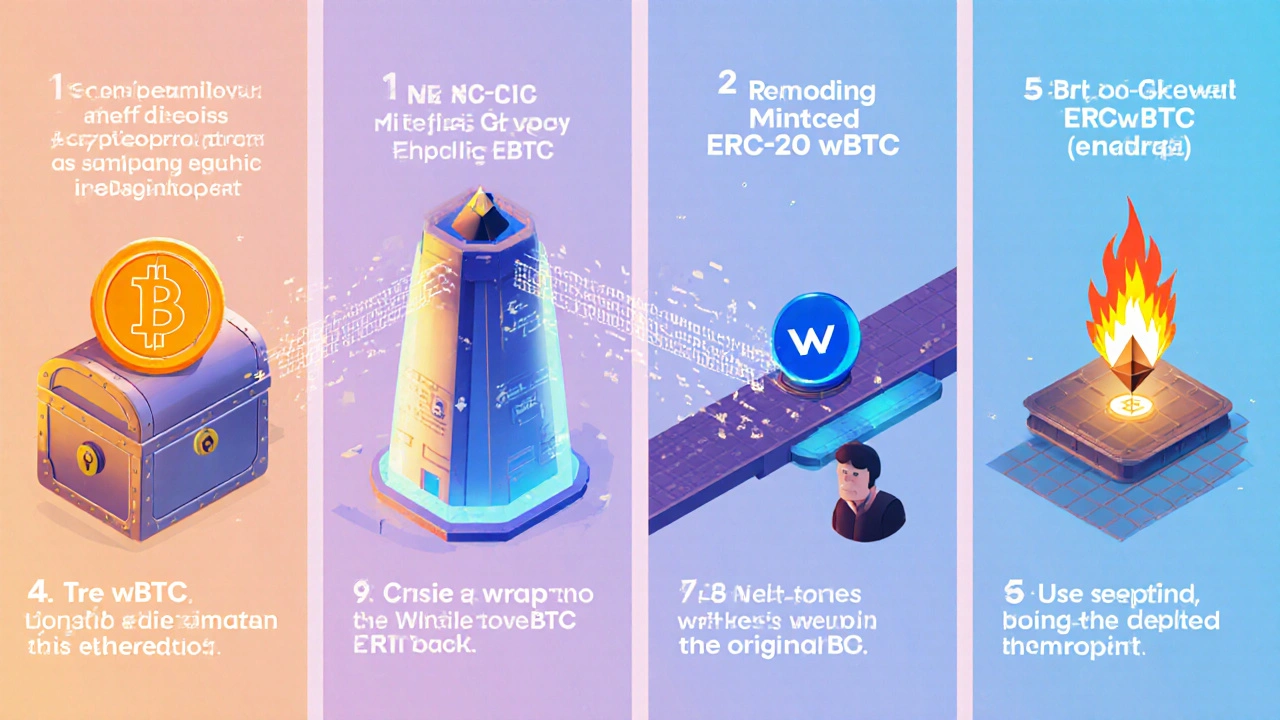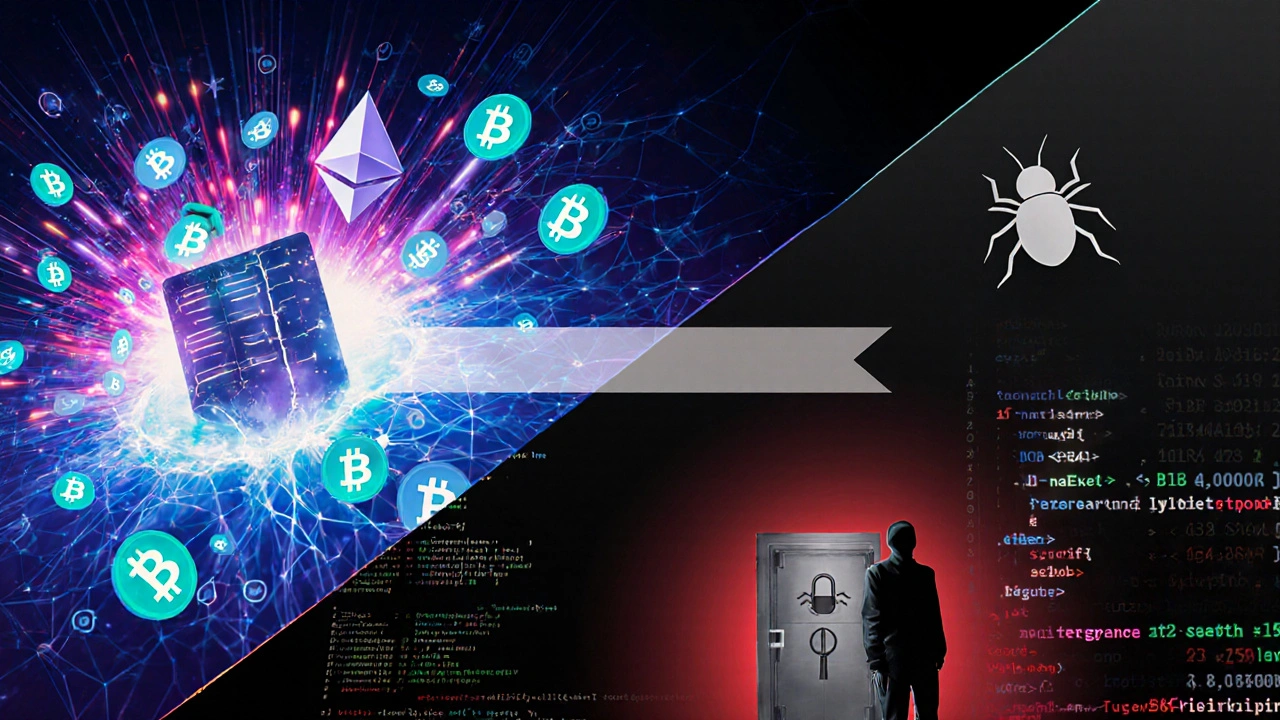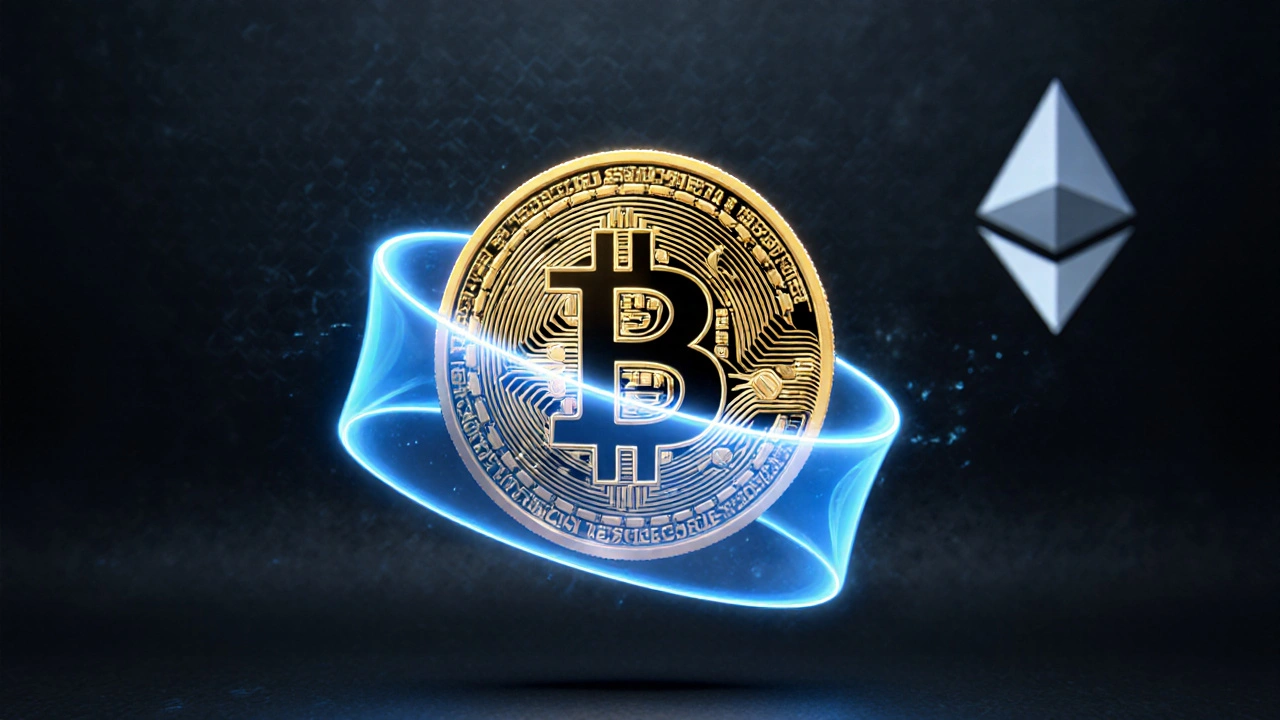Ever wondered how a Bitcoin can show up on the Ethereum network? The secret sauce is wrapped tokens. In this guide we break down what wrapped tokens are, why they exist, and step‑by‑step how they get created, moved, and redeemed.
What is a Wrapped Token?
Wrapped Token is a cryptographic representation of an original asset on a different blockchain. In plain English, it’s a digital wrapper that lets you use Bitcoin, Litecoin, or any other coin inside another blockchain’s ecosystem.
The wrapper is not a new asset; it’s a claim on the original token held by a trusted custodian or a smart contract. When the wrapper is burned, the original token is released back to its owner.
Why Wrap Tokens? The Core Benefits
- Access to DeFi: Wrapped assets can be supplied to lending platforms, liquidity pools, and yield farms that only accept native tokens of a given chain.
- Cross‑chain interoperability: They let you move value between isolated blockchains without selling and rebuying.
- Standardisation: By conforming to a common token standard (e.g., ERC‑20), wrapped tokens simplify integration for developers.
- Liquidity boost: Holding a high‑value asset like Bitcoin on a network with abundant DeFi tools can unlock new market depth.
Step‑by‑Step: How Wrapping Actually Happens
- User deposits the original asset. You send Bitcoin to a Custodian or a smart contract that locks it on the source chain.
- Proof of lock is generated. The system records a cryptographic proof that the Bitcoin is safely locked.
- Bridge issues the wrapper. A Blockchain Bridge reads the proof and mints an equivalent number of wrapped tokens on the destination chain.
- User receives the wrapped token. The newly minted tokens appear in the user’s wallet on the destination chain, ready for any ERC‑20‑compatible activity.
- Redemption (unwrapping). When you want the original Bitcoin back, you send the wrapped token to the bridge, which burns it and releases the locked Bitcoin to your address on the source chain.

Key Players in the Wrapping Ecosystem
Understanding the roles each component plays helps you evaluate security and fees.
- Custodian: Often a reputable exchange or a specialised bridge operator that holds the original assets. Custodians can be custodial (centralised) or decentralised (multi‑sig contracts).
- Smart Contract: On the destination chain, a contract enforces the one‑to‑one peg, handles minting/burning, and tracks ownership.
- Blockchain Bridge: The communication layer that transfers proof between chains and triggers the smart contract actions.
- Ethereum: The most common destination chain for wrapped assets because of its mature DeFi ecosystem and ERC‑20 standard.
- Bitcoin: The original asset often wrapped to gain access to Ethereum‑based services.
Popular Wrapped Token Examples
Seeing real‑world tokens makes the concept concrete.
- Wrapped Bitcoin (wBTC): A Bitcoin‑backed ERC‑20 token on Ethereum. Each wBTC is backed 1:1 by a custodial Bitcoin held by a consortium of exchanges.
- Wrapped Ether (WETH): Not a “real” wrap of Ether but a wrapper that turns ETH into an ERC‑20 token, enabling it to interact with contracts that only accept ERC‑20 tokens.
- Wrapped USDT (wUSDT): Allows the Tether stablecoin, originally on the Omni layer, to be used in Ethereum DeFi.
Risks and Things to Watch Out For
Wrapped tokens are powerful, but they come with trade‑offs.
- Custodial risk: If the custodian is hacked or misbehaves, the underlying assets could be lost. Look for multi‑sig or audited contracts.
- Smart contract bugs: A flaw in the mint/burn logic can lead to token inflation or loss. Verify that the contract has undergone third‑party audits.
- Liquidity risk: Some wrapped tokens have shallow markets, causing high slippage when you trade them.
- Regulatory exposure: Depending on jurisdiction, the custodial model may be subject to different licensing requirements.

Native vs. Wrapped Tokens: Quick Comparison
| Feature | Native Token | Wrapped Token |
|---|---|---|
| Origin Chain | Same as network (e.g., ETH on Ethereum) | Different from network (e.g., BTC on Ethereum) |
| Standard | Varies (native protocol) | Follows destination‑chain standard (ERC‑20, BEP‑20, etc.) |
| Liquidity Sources | Native DEXs, staking contracts | Depends on bridge and market makers |
| Security Model | Built‑in consensus security | Relies on custodian & bridge contracts |
| Use Cases | Payments, staking, governance | DeFi participation, cross‑chain swaps |
How to Wrap Tokens Yourself (A Mini‑Tutorial)
- Choose a reputable bridge (e.g., Wormhole, RenBridge, or a centralized exchange offering token wrapping).
- Connect a wallet that supports both source and destination chains (MetaMask + Bitcoin wallet).
- Initiate a deposit: send the original asset to the bridge’s deposit address. Confirm the transaction on the source chain.
- Wait for the bridge to generate the proof and mint the wrapped token. You’ll see the new token appear in your destination‑chain wallet.
- Start using the wrapped token in DeFi - add liquidity, lend it, or swap it for other assets.
- To unwrap, send the wrapped token back to the bridge. The bridge burns it and releases the original asset to the address you specify.
Always double‑check the bridge’s audit reports and fee structure before committing large sums.
Frequently Asked Questions
Can I wrap any cryptocurrency?
Technically, any asset can be wrapped if a bridge and custodian exist for it. In practice, only a handful of major coins (BTC, ETH, USDT, BNB) have widely‑used wrappers.
Do wrapped tokens have the same price as the original asset?
Ideally yes - the 1:1 peg is maintained by the custodian. Minor price deviations can happen due to market demand, liquidity, or bridge fees.
Is wrapping reversible?
Yes. Sending the wrapped token back to the bridge triggers a burn, and the original token is released to your address on the source chain.
What fees are involved?
You’ll pay the source‑chain transaction fee, the bridge’s service fee (often a small percentage), and the destination‑chain gas fee for minting.
Are wrapped tokens safe for long‑term holding?
They’re generally safe if the custodian is reputable and the smart contract is audited. Still, keep an eye on the bridge’s security updates and any regulatory changes.
Wrapped tokens have turned the fragmented blockchain world into a more fluid playground. By understanding the mechanics, you can safely tap into DeFi opportunities, move value across chains, and keep your assets flexible without losing the backing of the original coin.



Comments (7)
Diwakar Pandey October 20 2025
Wrapped tokens are basically a trust‑less way to bring Bitcoin onto Ethereum, which means you can lend, swap, or provide liquidity without ever moving the actual BTC.
Just make sure the custodian you pick has a solid audit trail; otherwise you’re trusting a single point of failure.
Many newcomers forget that the bridge fee is often hidden in the gas cost, so double‑check the total expense before you lock up large amounts.
Overall, the concept is simple, but the devil’s in the details, especially when you’re dealing with cross‑chain security.
If you’re unsure, start with a tiny amount to test the workflow.
Geet Ramchandani October 30 2025
Look, this whole “wrapped token” hype is just a glorified cash‑exchange scheme that the DeFi crowd parades as innovation.
They take your precious Bitcoin, lock it somewhere they call a “custodian,” and then hand you a cheap ERC‑20 pretend‑coin that can be burned whenever they feel like it.
Every time you wrap, you pay a hidden fee that the bridge operators conveniently forget to mention in their glossy marketing material.
Don’t be fooled by the “1:1 peg” claim; market demand, liquidity gaps, and bridge exploits can cause the wrapped token to trade at a premium or discount for hours.
The smart contracts that mint and burn are often written by the same teams that run the exchanges, and history shows they cut corners on security audits.
Remember the wBTC incident where a custodian lost a chunk of Bitcoin due to a mis‑configured hot wallet-your “secured” assets became a meme.
Even if the code looks clean, a single malicious node in the bridge can reorder proofs and steal funds before the burn transaction finalizes.
The whole system is a trust‑minimization gimmick, not a trust‑elimination miracle, and anyone who pretends otherwise is either clueless or intentionally deceptive.
What’s worse, regulators are waking up to these structures and may clamp down, leaving you stranded with an un‑redeemable token.
If you care about your privacy, wrapped tokens force you to expose your Bitcoin address to a third‑party who can log every deposit and withdrawal.
And let’s not ignore the environmental impact of double‑locking assets across two chains-more proof‑of‑work, more energy waste.
All this “interoperability” talk is just a buzzword to keep the speculative money flowing into DeFi farms that reward you with native tokens for using junk wrappers.
Bottom line: if you value security and transparency, stick to native chains or wait for truly decentralized, audited bridges that have survived multiple attack vectors.
Otherwise you’re just throwing your BTC into a glorified escrow box that could vanish tomorrow.
So before you wrap anything, do a deep dive, or better yet, stay away.
Cynthia Lamont November 9 2025
Wrapped tokens open doors to DeFi, but they also bring hidden traps that can snap shut in an instant.
Imagine watching your Bitcoin disappear because the bridge contract had a tiny bug-panic sets in fast.
This isn’t science fiction; it’s happened before, and the fallout was brutal for everyday users.
Stay vigilant, read the audit reports, and only use bridges with a strong community reputation.
Kirk Doherty November 20 2025
Only wrap if you trust the custodian.
Dmitriy Fedoseff November 30 2025
From a philosophical standpoint, the act of wrapping is a metaphor for humanity’s desire to transcend borders while remaining shackled to centralized authorities.
If we accept a custodian’s monopoly over our assets, we trade freedom for convenience-a trade many deem unacceptable.
Nevertheless, the aggressive pursuit of liquidity has forced the market to tolerate these intermediaries, despite their inherent risks.
Understanding this paradox is crucial before you lock your Bitcoin behind a smart contract that could be commandeered tomorrow.
Meghan O'Connor December 10 2025
The article glosses over the fact that most bridges are not truly decentralized; they rely on a handful of key validators who can collude.
Security audits are often superficial, and bugs slip through, leading to massive exploits.
Moreover, fee structures are opaque, and users end up paying more than advertised.
Anyone serious about crypto should demand full transparency and community‑run custody solutions.
Morgan ODonnell December 20 2025
It’s great to see more people exploring wrapped tokens, but remember to keep a balanced portfolio.
Mix native assets with wrapped ones so you’re not overly exposed to a single point of failure.
If you’re new, start with small amounts and test the bridge’s responsiveness before committing larger sums.